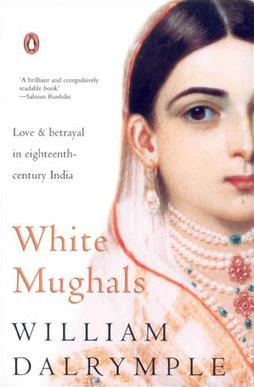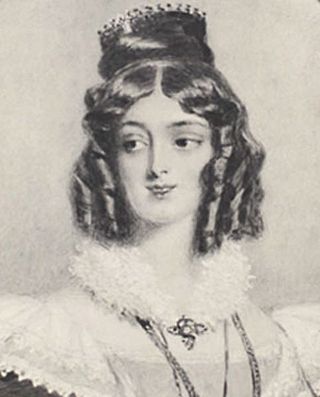
Osmania University is a collegiate public state university located in Hyderabad, Telangana, India. Mir Osman Ali Khan, the 7th Nizam of Hyderabad, issued a firman calling for its creation on 29 August 1917. It is the third oldest university in southern India, and the first to be established in the erstwhile Kingdom of Hyderabad. It was the first Indian university to use Urdu as a language of instruction, although with English as a compulsory subject. As of 2012, the university hosts 3,700 international students from more than 80 nations.

Hyderabad State was an independent monarchy/princely state located in the south-central Deccan region of Indian Subcontinent with its capital at the city of Hyderabad. It is now divided into the present-day state of Telangana, the Kalyana-Karnataka region of Karnataka, and the Marathwada region of Maharashtra in India.

Mir Osman Ali Khan, Asaf Jah VII was the last Nizam (ruler) of the Princely State of Kingdom of Hyderabad, the largest state in British India. He ascended the throne on 29 August 1911, at the age of 25 and ruled the Kingdom of Hyderabad between 1911 and 1948, until India annexed it. He was styled as His Exalted Highness (H.E.H) the Nizam of Hyderabad, and was widely considered one of the world's wealthiest people of all time. With some estimates placing his wealth at 2% of U.S. GDP, his portrait was on the cover of Time magazine in 1937. As a semi-autonomous monarch, he had his mint, printing his currency, the Hyderabadi rupee, and had a private treasury that was said to contain £100 million in gold and silver bullion, and a further £400 million of jewels. The major source of his wealth was the Golconda mines, the only supplier of diamonds in the world at that time. Among them was the Jacob Diamond, valued at some £50 million, and used by the Nizam as a paperweight.

Mir Farqunda Ali Khan commonly known as Nasir-ud-Daulah, was Nizam of Hyderabad, a princely state of British India, from 24 May 1829 until his death in 1857.

White Mughals is a 2002 history book by William Dalrymple. It is Dalrymple's fifth major book, and tells the true story of a love affair that took place in early nineteenth century Hyderabad between James Achilles Kirkpatrick and Khair-un-Nissa Begum.

Koti is a locality in the city of Hyderabad, Telangana, India. It is one of the best-known commercial Old Suburbs of Hyderabad. There are two areas in the vicinity: King Koti and Ram Koti.

Katherine Aurora "Kitty" Kirkpatrick was a British woman of Anglo-Indian descent best known as a muse of the Scottish philosopher Thomas Carlyle. Born in India to a British father and an Indian mother, Kirkpatrick moved to England at a young age. She met Carlyle and served as his muse for several of his novels. Kirkpatrick's story has been the subject of renewed interest by 21st-century historians, most notable William Dalrymple.

Sir Thomas Theophilus Metcalfe, 4th Baronet, KCB was an East India Company civil servant and agent of the Governor General of India at the imperial court of the Mughal Emperor Bahadur Shah Zafar.

The Asaf Jahi was a Muslim dynasty that ruled the Hyderabad State. The family came to India in the late 17th century and became employees of the Mughal Empire. They were great patrons of Persian culture, language, and literature, and the family found ready patronage.

Khairatabad is a neigbbourhood in Hyderabad, Telangana, India. It is a mandal in the Secunderabad Revenue division of Hyderabad District. This is a Zone in the Greater Hyderabad Municipal Corporation. There are five circles in this zone namely Mehdipatnam (12), Karwan (13), Goshamahal (14), Khairatabad (17) and Jubilee Hills (18). There are four wards under this Khairatabad circle, they are Khairtabad (91), Somajiguda (97), Ameerpet (98) and Sanathnagar (100).
Warasiguda is one of the neighborhoods in Hyderabad, India. It falls under Chilkalguda Police Station limits, located in the Secunderabad area. It is one of the prominent neighborhoods in this region, and it has a rich history, tied in part to the broader history of Hyderabad and Secunderabad.

Lieutenant-Colonel James Achilles Kirkpatrick was an East India Company officer and diplomat who served as the Resident at Hyderabad Deccan from 1798 until 1805. Kirkpatrick also ordered the construction of the Koti Residency in Hyderabad, which has since come to serve as a major tourist attraction.

The Telangana Mahila Viswavidyalayam, formerly Osmania University College for Women, is a state university in Hyderabad, India. It was formerly a constituent women's college of Osmania University. The main building of this college, which was part of the British legacy in India, is a monument of great aesthetic, architectural and historical importance. Commissioned in 1803 for the British resident, J. A. Kirkpatrick, his builder the Lt. Samuel Russell of the Madras Engineers, has produced a structure capable of rivaling the Governor's house in Kolkata.

The culture of Hyderabad, also known as Hyderabadi Tehzeeb or Dakhini Tehzeeb, is the traditional cultural lifestyle of the Hyderabadi Muslims, and characterizes distinct linguistic and cultural traditions of North and South India, which meet and mingle in the city and erstwhile kingdom. This blending was the result of the geographic location of the region and the variety of historical dynasties that ruled the city across different periods—its inception by the Qutub Shahi dynasty in 1591 AD, the occupation by the Mughal Empire and its decline, and the patronage under the Asaf Jahi dynasty.
The Praja Bhavan, officially known as Jyotirao Phule Praja Bhavan and formerly as Pragathi Bhavan is the official residence and principal workplace of the Chief Minister of Telangana. It is located at Greenlands Road, Punjagutta, Hyderabad in Telangana. It was built in 2016 under the chief ministership of K. Chandrashekar Rao. It was designed by the Indian architect, N. Niroop Kumar Reddy.
Sir Henry Russell, 2nd Baronet, was an English diplomat and landowner.

Rupa Bai Furdoonji was an Indian Parsi doctor who was the world's first female anesthetist. She practiced medicine in Hyderabad, and played a major role in introducing the use of chloroform as an anesthetic in India.
The localities and neighborhoods of Hyderabad have unique oral histories, dating to the time of the Qutb Shahi dynasty, over 400 years ago, and are named after various people and things. Some are named after a major building or structure in the locality, others named for individuals. The names are mostly in Telugu and Urdu, the major languages of the city. This is a list of localities, neighborhoods and streets of Hyderabad and their etymology.

The architecture of Telangana dates back over two thousand years. The Indian state of Telangana is in the Deccan plateau, bordering the coastal plain of Andhra Pradesh. It has produced regional variants of wider styles of Indian architecture, both in Hindu temple architecture and Indo-Islamic architecture.

A distinct Indo-Islamic architecture style with local contribution is reflected in the historical buildings of Hyderabad, making it the first and "Best Heritage City of India" as of March 2012. The city houses many famous historical sites constructed during Qutb Shahi and Asaf Jahi period, including various mosques and palaces.




















